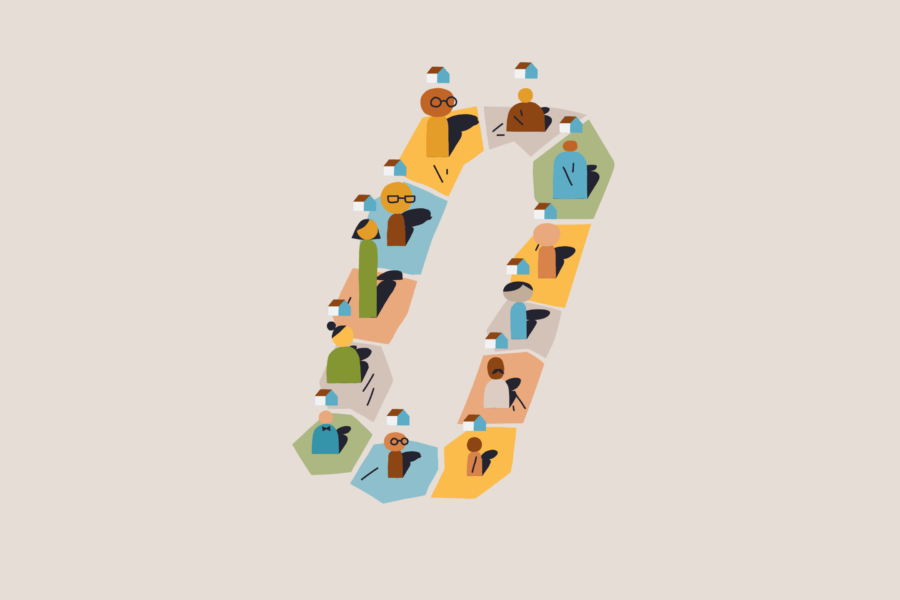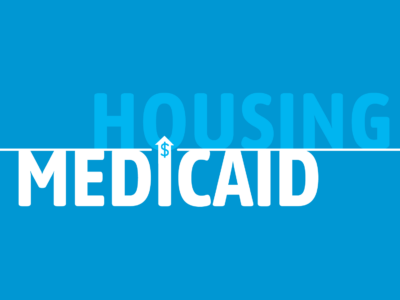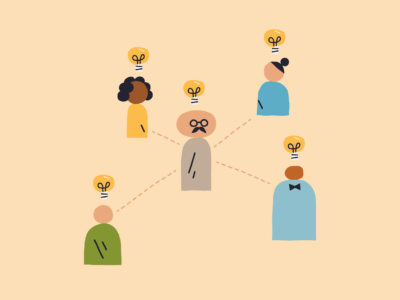Our Aim
Our goal is to prove that homelessness is solvable and drive the changes necessary to create a tipping point across the country. By 2026, at least 75 communities will have made significant progress toward solving homelessness. Five of these communities will have made homelessness rare and brief for everyone.
What kind of communities are in Built for Zero?
The Built for Zero movement includes 132 communities. More than 70 million people — about a fifth of the U.S. population — live in these communities.
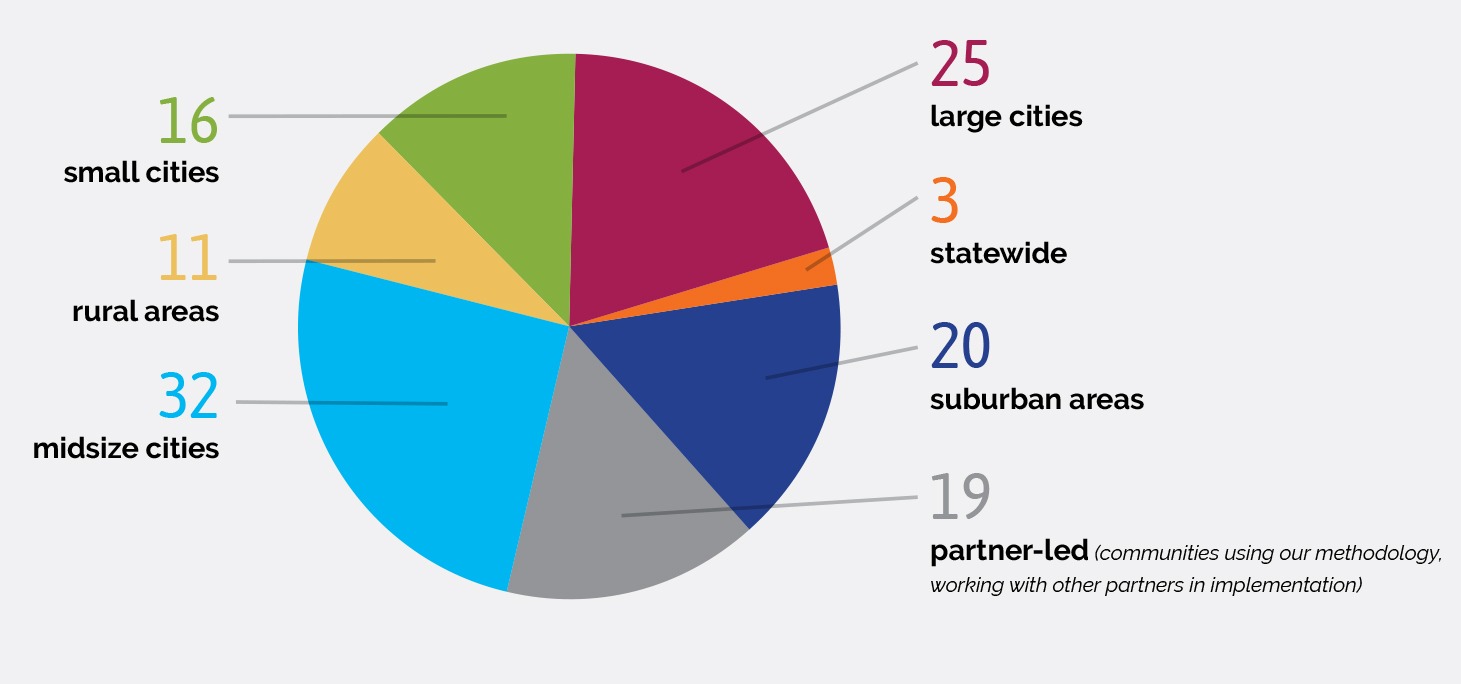
Our Approach
To propel the movement to solve homelessness up and over a tipping point, we work with communities to solve the most persistent challenges that stand in the way:
- preventing homelessness from happening in the first place
- building and sustaining homeless response systems that continuously resolve homelessness
- creating local housing systems that steadily deliver homes to meet communities’ needs
- building the public expectations and political will needed to accelerate and sustain progress

What does this look like in practice?
Building a resilient community housing system involves new ways of working. We’ve found this requires five foundational elements:
- A shared, community-wide definition of what solving homelessness looks like and the belief that it’s possible
- A collaborative, community-wide team that is accountable and working together as a command center
- Comprehensive, real-time, by-name data on who is experiencing homelessness to continuously track progress and improve system performance
- An equity focus to overcome disparities
- Investments in the housing solutions that local data shows are needed
A well-functioning housing system not only connects people quickly with a safe place to live but also prevents people from experiencing homelessness in the first place
With these pieces in place and well coordinated, communities are better positioned to connect those in housing crises to the help needed to get back on their feet. A well-functioning housing system not only connects people quickly with a safe place to live but also prevents people from experiencing homelessness in the first place.
For example, in Fairfax, Virginia, anyone who called with a housing emergency was contacted by a team with one clear goal: to divert them from losing their home. In the first quarter of 2023 alone, the Fairfax team, comprised of many nonprofit and government agencies, diverted 74% of callers from homelessness.
Finally, making sure reductions in homelessness are sustained requires an environment designed to do that. This means building the public’s expectation that homelessness be solved, and the political will to enact effective policies, mobilize needed resources, and increase access to housing.
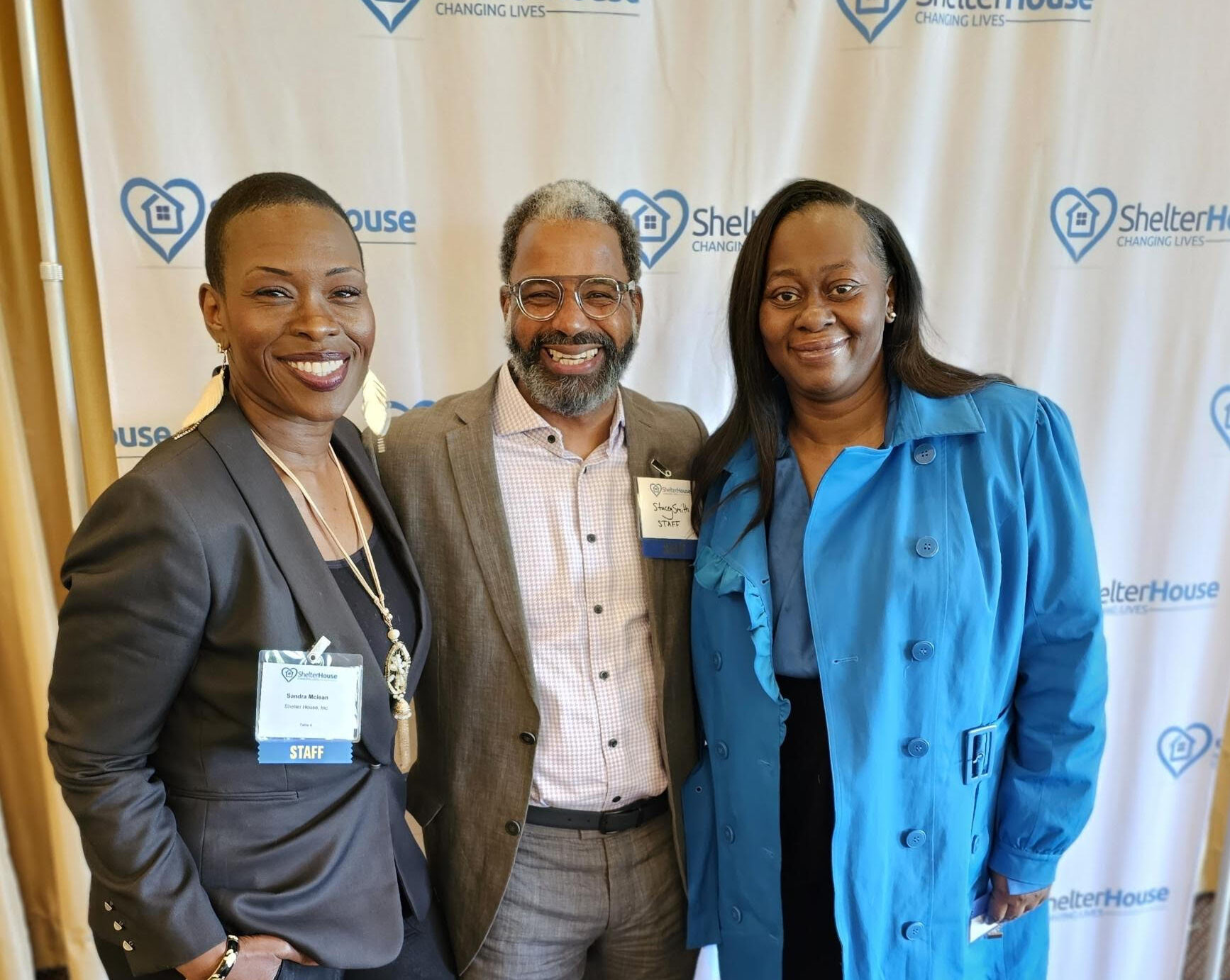
Progress
Since 2015, 14 communities in Built for Zero have achieved functional zero for one or more populations.
Fourteen more Built for Zero communities expect to reach this milestone in the next 12 months.
Functional Zero
A technical term akin to “net zero” measures whether a community has reached a place where instances of homelessness are rare, brief, and nonrecurring, and outcomes are equitable.
In 2023, 27 communities made a measurable reduction in homelessness for one or more populations.
Their system improvements and allocation of resources directly result in fewer people experiencing homelessness month over month.
Populations
Communities track various demographics, including veterans, youth, families, single adults, and people experiencing chronic (long-lasting or recurring) homelessness. There are different resources and housing needs for each group, so it helps to understand progress within each group.
More communities are compiling quality data on exactly who is experiencing homelessness and what support they need to exit it.
This year, several communities reached the milestone of having quality, by-name data for all individuals experiencing homelessness, whether on the streets or in temporary shelters. This allows organizations to understand the actual scope of homelessness and whether all their efforts are adding up to fewer people experiencing homelessness month over month. Accurate, real-time information also allows organizations to collaborate around a shared awareness of what’s happening, see where progress is stuck, and recognize high-impact areas for focus to reduce the number of people experiencing homelessness.

Washoe County, Nevada — home to Reno — was one of the first communities to reach quality data for all single adults.
“You can’t solve a problem that you can’t see. And you need that data piece also to see that our investments and our program changes are getting us where we want to go,” explained Catrina Peters, Homeless Services Coordinator with Washoe County Housing and Homeless Services. “We don’t want to waste precious resources. We want to see dollars and effort going to programs that are going to solve homelessness.”
At their peak, Washoe County had real-time records of almost 2,500 people experiencing homelessness in their community. In 2023, Washoe County made huge strides, reducing that number by 28%, with 1,800 people on their by-name list in October.
Communities are making progress through other backbone, intermediary organizations supported by Community Solutions.
The movement to solve homelessness is greater than any single organization. Community Solutions partners with “backbone” organizations guiding national movements to make homelessness rare and brief in five countries outside the United States.
We provide design and strategy support to the Australian Alliance to End Homelessness and the Canadian Alliance to End Homelessness on national campaigns modeled on Built for Zero. Four communities in Canada have achieved functional zero for a population, including three for veterans and one for chronic homelessness. Community Solutions also provides similar advisory and initiative design support to early-stage efforts in the United Kingdom, France, and Denmark.

Communities are making progress:
- expanding outreach to identify and serve more unsheltered individuals
- expanding housing options for people currently experiencing homelessness
- implementing prevention and diversion programs to help people avoid homelessness in the first place
Challenges and Learnings
The Who and How of Collaboration
To solve homelessness, organizations across a community must work together. This involves creating a structure for decision-making and new ways of working that unify efforts into a resilient housing and homeless response system.
Agencies (and even programs within the same agency) are often siloed, leading to fragmented and duplicative services for those in housing crises.
Beyond the challenge of unifying fragmented efforts, organizations are limited by capacity constraints (staffing, funding, technical expertise). Intentional partnerships allow communities to share resources, skills, and knowledge to make optimal use of their existing assets to reduce homelessness and identify where new resources could have the greatest impact.
By building close relationships and collective identity, organizations build the trust and true collaboration necessary for creating and sustaining a resilient housing system. As the leader of one large city’s team explained, “The most important things are relationships and building trust. That enables people to work in different ways and enables them to have conversations about what’s working and what isn’t. The transformation of relationships is what drives everything else.”
A great example of this results-focused collaboration is Washington, D.C.’s Veterans NOW! Workgroup. The workgroup is a coalition of government agencies, nonprofit organizations, and community members with lived experience who convene regularly around the shared goal of ending veteran homelessness and identifying and overcoming the silos that hinder progress. Through their efforts, Washington, D.C., has reduced veteran homelessness by nearly 50% since 2015.
However, broader cross-sector collaboration is needed to capture all of a community’s available resources and capabilities to drive reductions in homelessness. This includes business leaders, landlords, law enforcement, health care systems, philanthropies, universities, and the range of actors who constitute a community’s civic infrastructure.

Cross-sector collaboration
Almost two-thirds of Built for Zero communities interviewed for our impact report reported engaging at least one broader cross-sector partner — with health care organizations and landlords being the focus. Less than a quarter of communities named partnerships with other adjacent sectors, such as law enforcement or the legal system. Even fewer collaborated with the private sector, such as businesses and funders.
Making homelessness rare and brief will require a broader network of partners than homeless service providers alone. Community Solutions will launch an effort in 2024 to help communities build these critical relationships.
Communities are working to ensure collaboration is the norm.
To lock in new ways of working, communities are formalizing collaboration at the system level. Take this example from Metro Denver.
The Metro Denver Homeless Initiative (MDHI) is responsible for solving homelessness across seven counties, 40 municipalities, and a population of 3.2 million. To better tailor solutions to local contexts, they’ve divided their approach into nine subregions.
To assure coordination at every level, MDHI convenes key partners, builds buy-in, monitors the quality and consistency of data, provides technical assistance across the nine subregions, and coordinates funding. Partners include government agencies, service providers, health care entities, legal groups, foundations, and civic organizations.
MDHI supports the subregional teams and facilitates regional coordination efforts. Each subregion also has its own structure, generally consisting of:
- an executive team of elected officials that meets monthly
- a homeless coordination team of nonprofit and agency leaders focused on eliminating barriers and improving communication
- case conferencing teams that discuss individuals experiencing homelessness to determine needed support
This tiered governance infrastructure facilitates regional strategic planning while allowing for locality-specific responses. And this approach is working: Metro Denver has reduced veteran homelessness by 30% over the past four years.
The role of the lead organization, such as MDHI, is critical in system-level change. The lead organization provides the backbone — the infrastructure, support, and leadership required to steer the collaboration and hold members accountable to shared goals.
Leadership matters — both at the system and individual level.
System leaders driving local collaborative efforts are most effective when they:
- Are situated within an organization positioned to have influence across the community.
- Have decision-making influence or political capital to advance system-wide results.
- Have the ability to engage many stakeholders.
- Are engaged in learning networks such as Built for Zero to support system-level impact.

Empowerment and Authority
Built for Zero studies the key attributes of effective system leaders and ways to develop more leaders with these qualities and skills. Ongoing professional development and empowerment is critical to advancing solutions and creating alignment. The two examples below highlight the importance of the system lead’s role.
In one Built for Zero community, the system leader sits within a direct-service nonprofit – to reduce power plays or political challenges that might arise if the role was located within the lead organization. Yet the leader has challenges enforcing agreements among peer agencies, gaining consistent participation in key activities, and holding partners accountable to community-wide goals. Multiple levels of bureaucracy stand between them and elected officials and municipal agency leaders and the ability to work nimbly to advance progress.
In another, Bergen County, New Jersey — a community that has reached functional zero veteran and chronic homelessness — the system leader is an employee of the county, chairs the board of the lead homeless services organization, and sits on major committees controlling resources. She explains: “the more tentacles you have into these systems, the more you can inform them. It’s the connective tissue of getting other systems to work a little differently.”
Aligned frameworks, policies, and processes across the system lead to better integration.
Built for Zero’s data-driven framework enables communities to build alignment and commitment among key organizations with established community-wide performance measures. Organizations can see individually and collectively how their contributions can lead to overall reductions in homelessness.
Creating a strong and resilient housing and homeless response system is the aim of Built for Zero communities, but many are concerned with sustainability and how to ensure their system improvements endure. Institutionalizing collaborative ways of working will require new policies, providing for needed coordination capacity and governance models that enable effective system operations.
Read more from our 2023 Impact and Learning Report

The future we can build together

Our path toward a tipping point

Helping communities solve homelessness
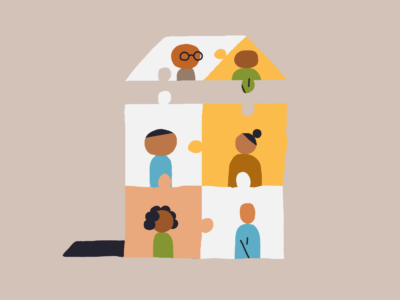
Supporting equitable homeless response systems

Solving key data and collaboration challenges

